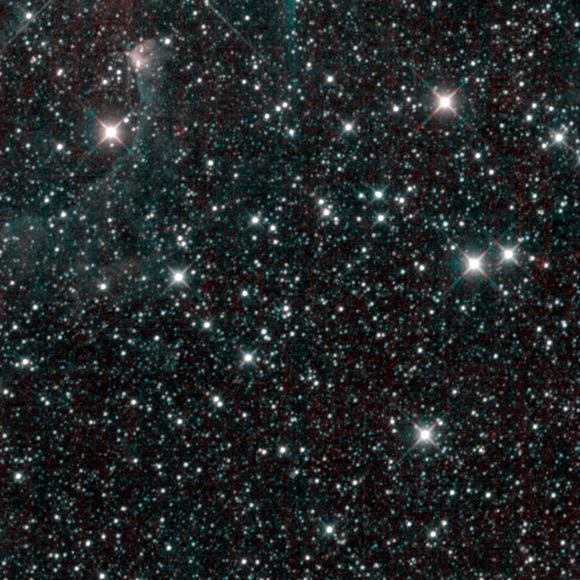[/caption]
First light images from telescopes and spacecraft are exciting – there is the exhilaration that the equipment is working and the anticipation of all the great observations to come. This image has a little different feel to it. On February 1st, 2011, NASA’s Wide-field Infrared Survey Explorer, or WISE, took its last snapshot of the sky. This “last light” image comes after just 13 months of service in space.
This short lifetime was expected: the WISE team knew the cryogen would only last 10 months. WISE launched on Dec. 14, 2009 and there was a 1 month in-orbit check out period, then the 6–month survey, so the team is happy to have had the little extra time with the telescope that they did.
This “last light” image, however, is highly reminiscent of its “first light” image, and shows thousands of stars in a patch of the Milky Way Galaxy, covering an area 3 times the size of the full Moon, in the constellation Perseus. In the upper left corner, a faint wispy cloud can be seen bending around a pulsating variable star called EV Persei.
In the short 13 months that WISE surveyed, it produced millions of infrared images covering the whole sky in its four bands, and covering it twice at 3.4 and 4.6 microns. It studied asteroids, the coolest and dimmest stars, and the most luminous galaxies.
Now that the survey is complete, WISE is being put into hibernation. While the satellite sleeps and circles more than 500 kilometers above the Earth’s surface, the WISE team is busily preparing its data for two big public releases: one this April, and the final release in the spring of 2012. Even though WISE has taken its last picture, the project will continue to feature some of the best imagery from the survey on a regular basis.
The coolant for the spacecraft ran out in October of 2010 and WISE warmed up from -260 degrees to -200 degrees C (-436 to -328 degrees Fahrenheit). This image contains data from the two detectors largely unaffected by the warm-up: 3.4 and 4.6 microns (the 12 and 22 micron detectors are no longer useful at the warmer temperatures).
So long, WISE, and we thank you (but look forward to the public release of your data and more images to come.)


I can’t wait to see what they found.
Ditto~
Love WISE imagery. Well done old mate!
It amazes me that they produce their result from the millions of the pictures from WISE that fast. Seems to be excellent project management!
The Hubble is 353 miles up and this one is only a couple hundred miles farther out. How much would it cost to have a shuttle mission refill the coolant or whatever else is needed anyway? Otherwise a perfectly good multi-billion dollar space observatory is just going to be wasted.
And who really believes that the shuttles are done?